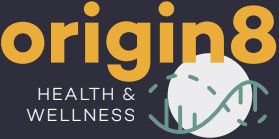
The world has gotten a little crazy these last 6 months. Here is the first in a brief series on oxygen to assist you in making the best decisions for your health. Considered one of the vitals to life, oxygen, like many body functions, is something we may take for granted until we are unable to do it well.
Did you know that 33% of ER visits admit patients with oxygen levels below 90%?
To most this may not mean much, however, the brain loses oxygen causing cell destruction and death below 88%. Take note that when we sleep our blood oxygen drops on average 6-8% points. A BIG DEAL when it comes to recovery from the Stress of daily life, disrupted sleep, eventually leading to sleep apnea. Insufficient sleep is linked to:
- Type 2 diabetes, specifically HGB A1C, is an indicator of long-duration blood sugar imbalances.
- Cardiovascular disease (Hypertension, Stroke, Arrhythmias, Atherosclerosis).
- Obesity: regulation of the hypothalamus or stress portions of the brain which regulate appetite and energy expenditure. Worse in childhood and adolescence, aka the “lazy teenage”, it transcends generational judgment.
- Depression has been preceded by sleep apnea in newly developing research. The fancy new term for chronic sleep apnea is Obstructive Sleep Apnea Syndrome.
“Obstructive sleep apnea (OSA) is a worldwide highly prevalent disease associated with systemic consequences, including excessive sleepiness, impairment of neurocognitive function, and daytime performance, including the driving ability. The long-term sequelae of OSA include an increased risk for cardiovascular, cerebrovascular, and metabolic syndrome disorders that ultimately lead to premature death if untreated.” Read that quote again one more time. How many people do you know with these symptoms?
A slippery slope of ill health leading to dis-eased life.
The nervous system automatically regulates the volume of air brought into the body, also monitoring the concentration of Oxygen and Carbon Dioxide in the blood. The regulation is performed in the upper cervical spine extending down into the middle of the neck. Precisely why Chiropractic is vital to removing interference to the signals of proper body oxygenation, as well as mobilizing the rib cage and clavicles to increase lung volume. At Origin8 Health & Wellness we utilize Pulse Oximetry to measure blood oxygen percentage before and after chiropractic adjustments. We find that on average patients enter the clinic with 94-98% oxygen saturation, and leave with 97-99% oxygen. Patients suffering from an illness or are under high amounts of stress typically have 90-95% oxygen upon arrival. Let’s look at how chemistry, illness, and stress play a role in oxygen percentage.
Your body is amazing! It utilizes chemical receptors in the blood, and stretch receptors in the vessels to monitor concentrations of O2 and CO2 reflexively. In response, you automatically breathe more rapidly and deeper in order to refill the available oxygen, or off-gas the carbon dioxide. When we are under stress (exercise, mental, emotional, or shock), the nervous system constricts the blood vessels to increase blood pressure so we may respond to environmental demands. The airways in the upper chest and nasal passages begin to constrict (drying up mucus) limiting airflow. The diaphragm tightens, limiting lung expansion. Stress causes cortisol to be released, regulating your immune system in a slower response over a longer duration.
Said another way, fast to get sick and slow to recover. The longer the duration of stress and limited oxygenation, the more the immune chemicals (interleukin and cytokines for you geeks) flood the bloodstream, altering gene expression. Especially damaging for our sensitive friends who already have altered gene expression resulting in auto-immune conditions.
Quick sidebar on Epigenetics. Check out someBruce Lipton Ph.D. Hydration is another key element to maintaining the fluidity of tissues in the body. A general rule is to drink half of your body weight in ounces of water. Additionally equal parts water for any juice, soda, alcohol, coffee, or tea to maintain hydration from the dehydrating effects of these substances. Did you know you can hydrate your body, or dehydrate it, by the types of foods you eat? Highly processed dry goods, meats, even roasted vegetables can pull water from your tissues causing inflammation or water weight. Fresh fruits and vegetables, broths/soups, even lightly steamed veggies may donate additional water. Contact us for your individual health needs or for a referral. Not all providers are equipped to create functional health assessments. Having said that, basic nutrition for optimal oxygenation comes from electrolyte balance (we use Lyte Switch)

in order to keep tissue concentrations balanced and to maintain hydration. Essential Fatty Acids or Omega 3 oils (EPA, DHA) promote a healthy barrier system, efficient transportation, and reduce inflammation within the body. Individuals may need to support Lung, Kidney, Liver, Heart, and Blood sugar for optimal oxygenation.
Be sure to get outside! Daily walking has so many health benefits on top of improved oxygenation!
- Lower blood pressure and cholesterol. The National Walkers’ Health study found that regular walking was linked to a 7 percent reduced risk of high blood pressure and high cholesterol.
- Lower fasting blood sugar (glucose). …
- Better memory and cognitive function.
- Lower stress and improved mood. …
- Longer life.
Studies found that during high altitude, low environmental oxygen, the body responds quickly to increase hemoglobin and heart rate to maintain optimal oxygen concentrations. However, after returning to sea level, the sympathetic nervous system remained elevated for 4-6 months. Translated to our current public health recommendation we could be having prolonged impacts on our health for months following our mask mandates, especially if worn for longer durations of our day. Improve functions like OxygenationMental ClarityExercise recovery athletic Personal RecordsRecovery from colds and plus stress reduction Support conditions like AsthmaCOPDCoughBronchitisEmpyhsemaLung CancerCystic FibrosisPneumoniaPleural Effusion If you have concerns a good place to start is with taking a Wellness Subjective evaluation. Be honest with yourself over the past 3 months. If you want to support in understanding the results, forward them to us at[email protected]https://Wellnesscheckonline.Com Resources:(1)J Physiol. 2003 Feb 1; 546(Pt 3): 921–929. Published online 2002 Nov 29. doi:10.1113/Jphysiol.2002.031765PMCID: PMC2342582 PMID:12563015(2) Matthijs Kox, Lucas T. van Eijk, Jelle Zwaag, Joanne van den Wildenberg, Fred C. G. J. Sweep, Johannes G. van der Hoeven, and Peter Pickkers PNAS May 20, 2014 111 (20) 7379-7384; first published May 5, 2014https://Doi.Org/10.1073/Pnas.1322174111(3)Front Immunol. 2017; 8: 324. Published online 2017 Mar 21. doi:10.3389/Fimmu.2017.00324PMCID: PMC5359232 PMID:28377771Knutson KL, Ryden AM, Mander VA, Van Cauter E. Role of sleep duration and quality in the risk and severity of type 2 diabetes mellitus. Arch Intern Med 2006;166:1768–1764.Kasasbeh E, Chi DS, Krishnaswamy G. Inflammatory aspects of sleep apnea and their cardiovascular consequences. South Med J 2006;99:58–67.Taheri S. The link between short sleep duration and obesity: We should recommend more sleep to prevent obesity. Arch Dis Child 2006;91:881–884.Zimmerman M, McGlinchey JB, Young D, Chelminski I. Diagnosing major depressive disorder I: A psychometric evaluation of the DSM-IV symptom criteria. J Nerv Ment Dis 2006;194:158–163. Schwartz DJ, Kohler WC, Karatinos G. Symptoms of depression in individuals with obstructive sleep apnea may be amenable to treatment with continuous positive airway pressure. Chest2005;128:1304–1306.Newman AB, Nieto FJ, Guidry U, Lind BK, Redline S, Pickering TG, et al. Sleep Heart Health Study Research Group Relation of sleep-disordered breathing to cardiovascular disease risk factors: The Sleep Heart Health Study. Am J Epidemiol. 2001;154:50–9.Nadeem R, Singh M, Nida M, Kwon S, Sajid H, Witkowski J, et al. Effect of obstructive sleep apnea-hypopnea syndrome on lipid profile: a meta-regression analysis. J Clin Sleep Med. 2014;10:10475-89




